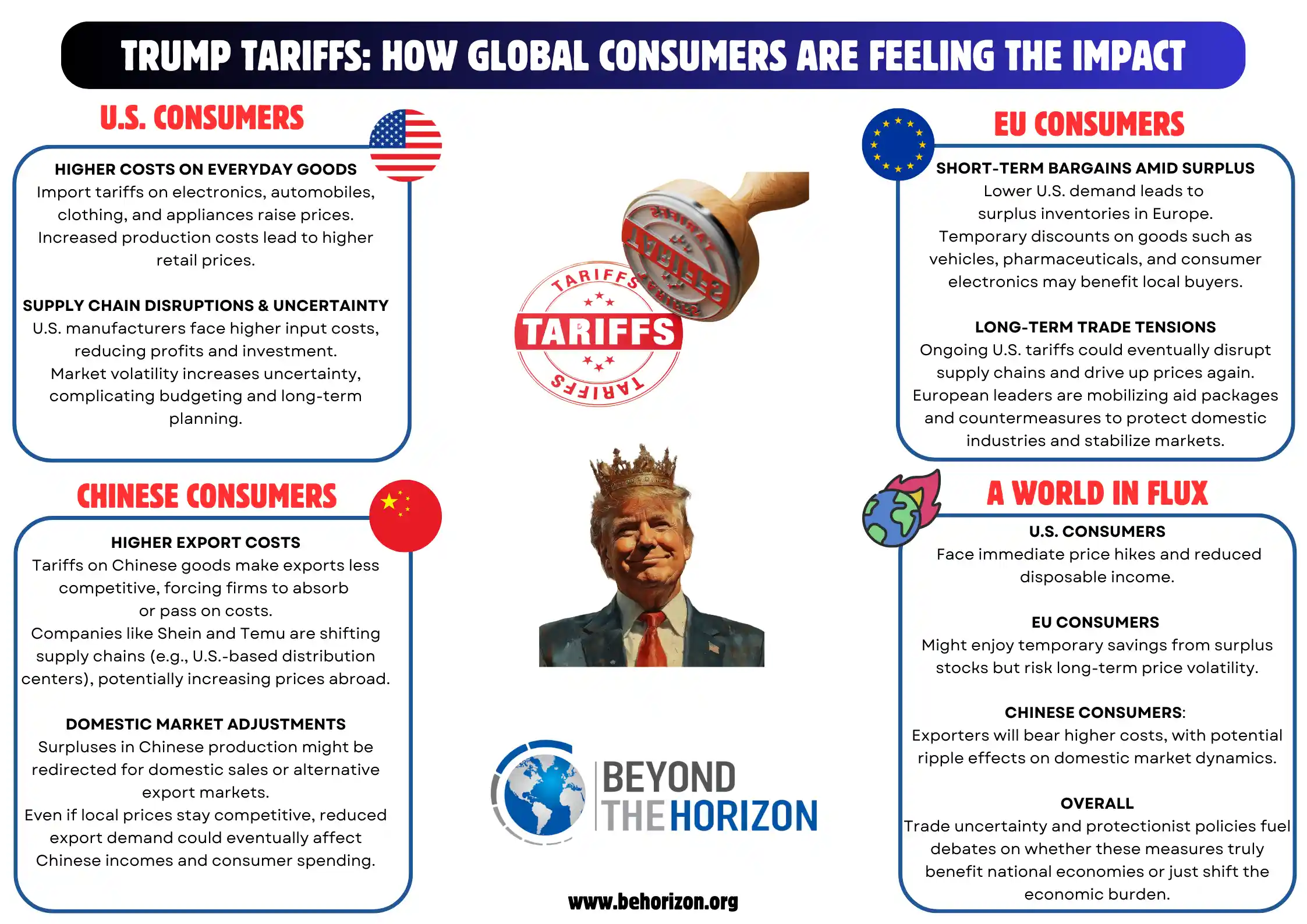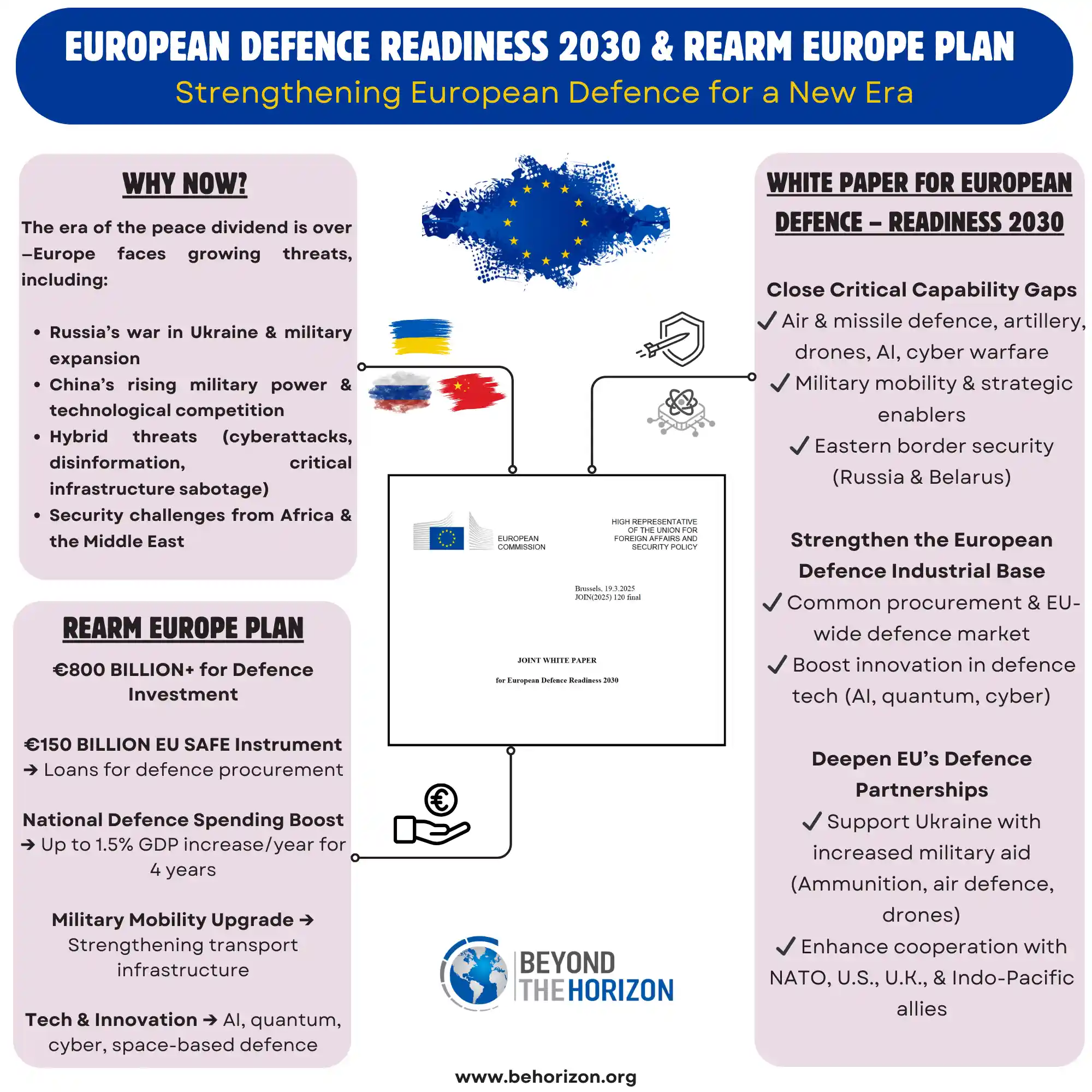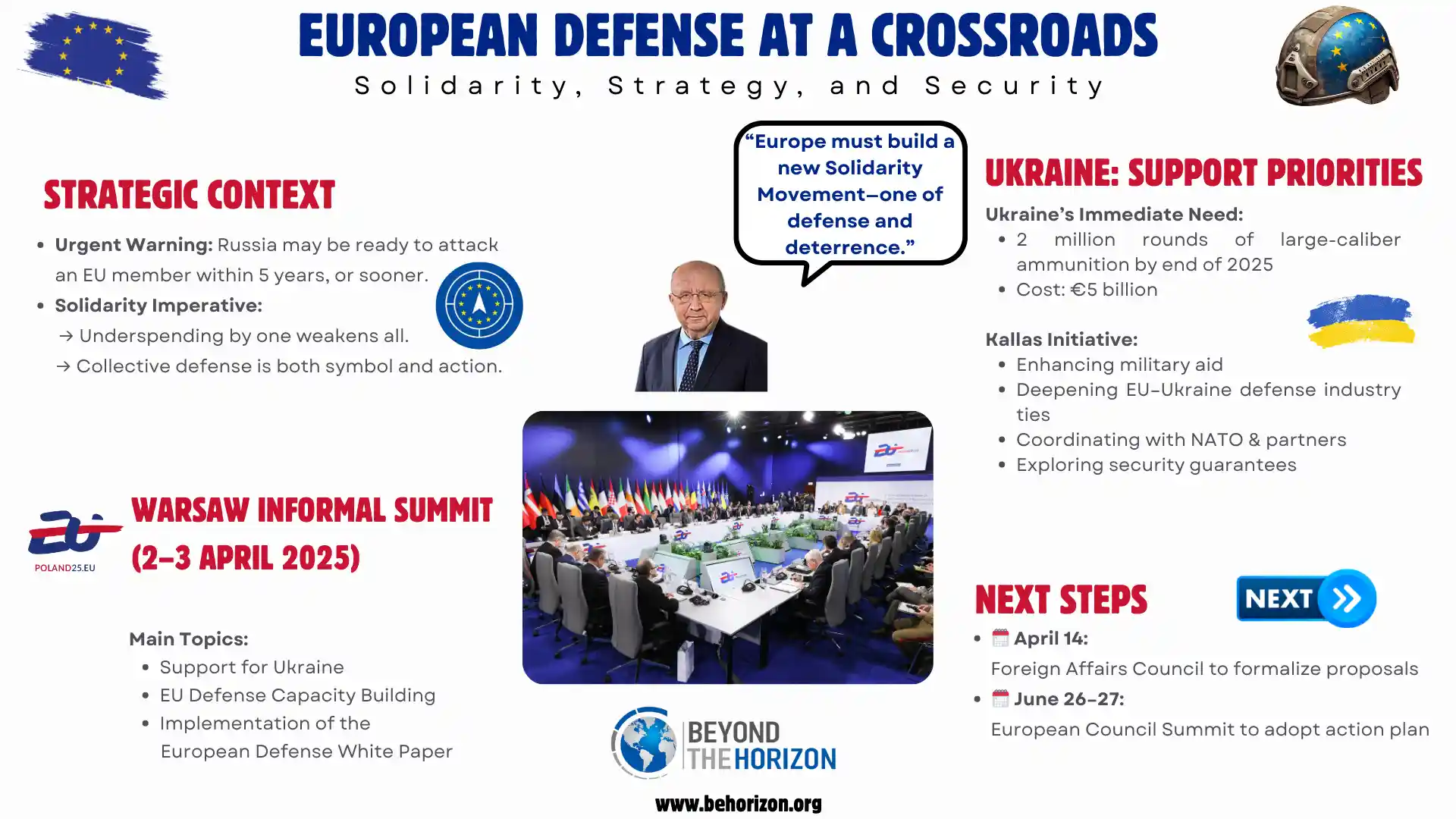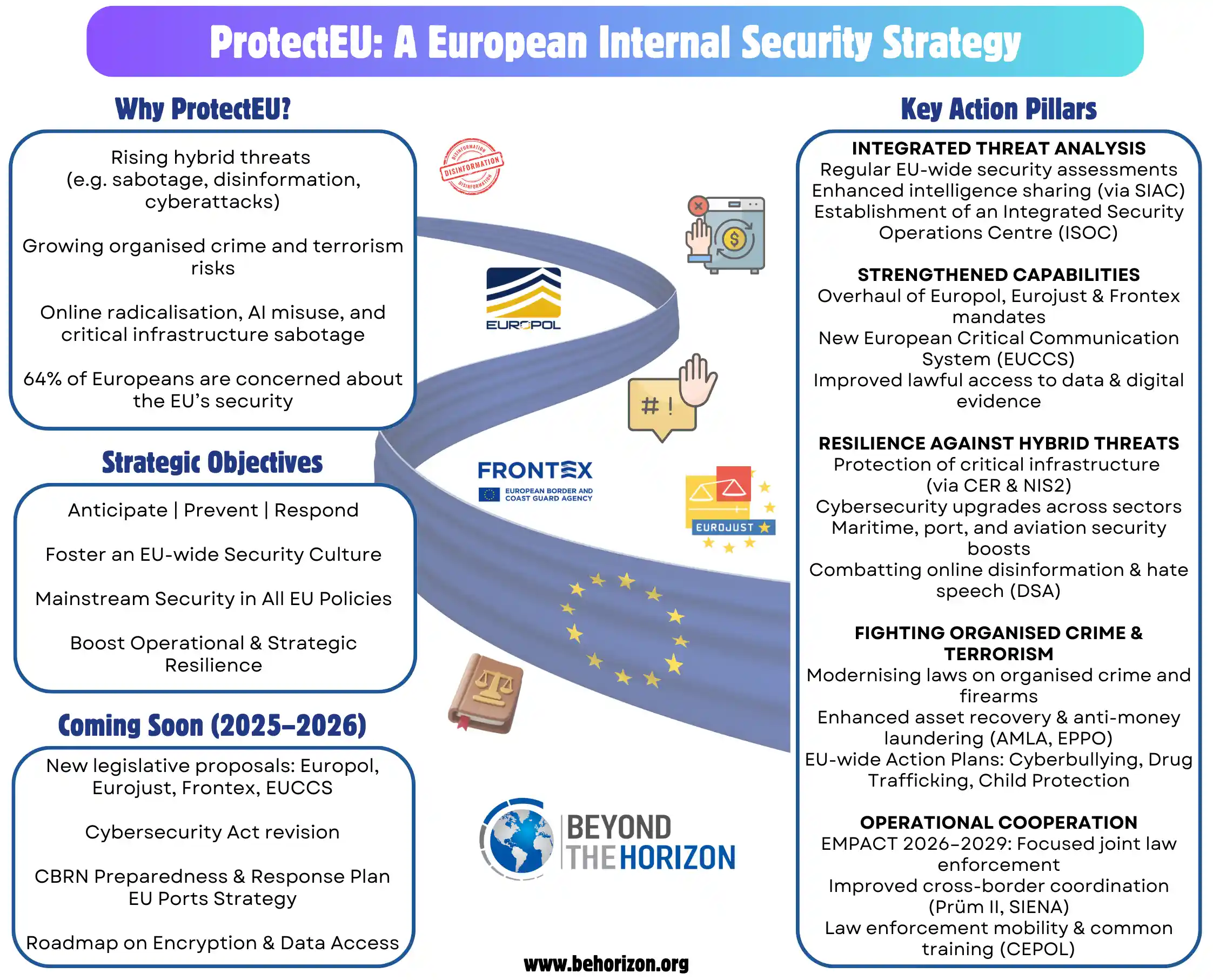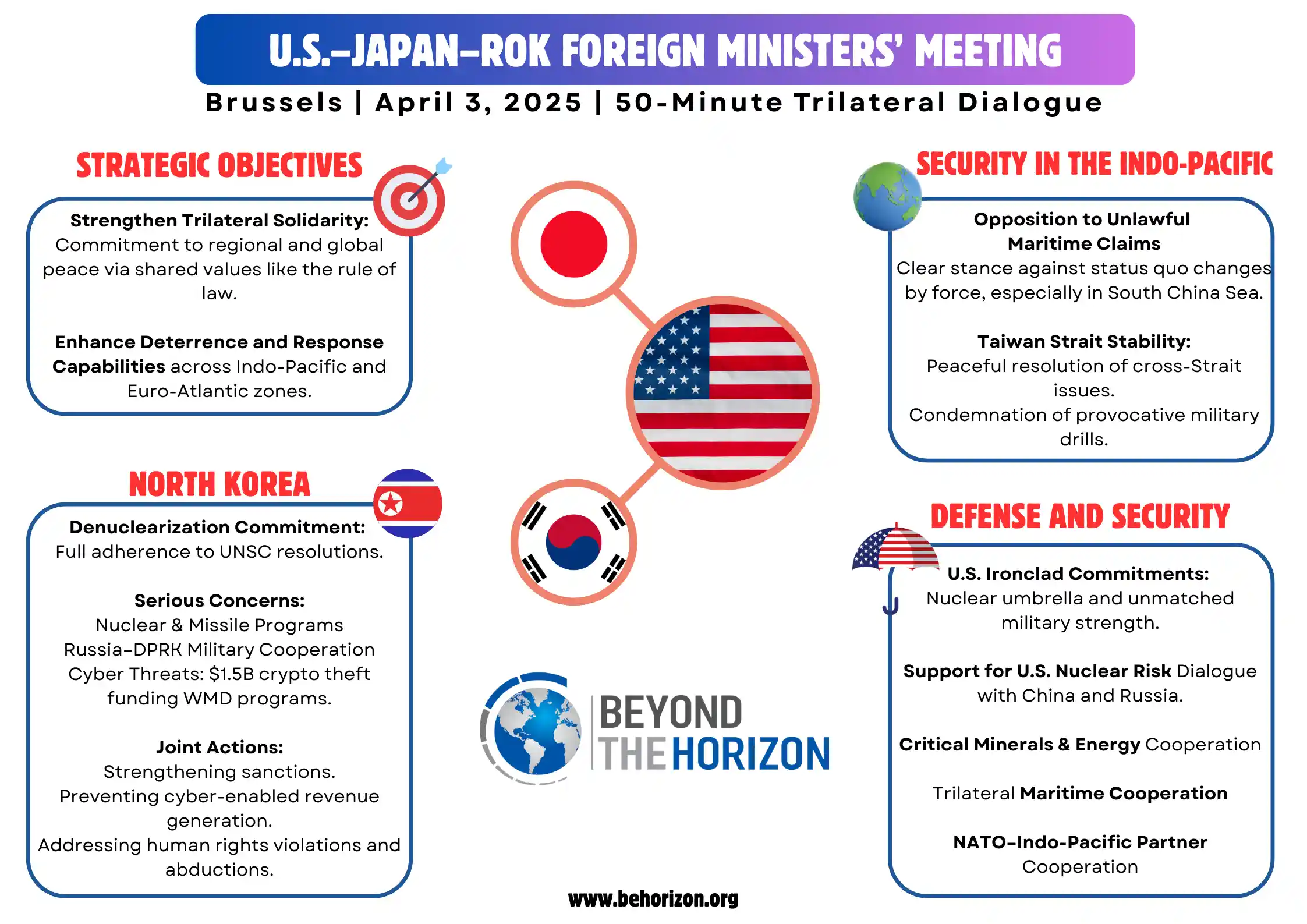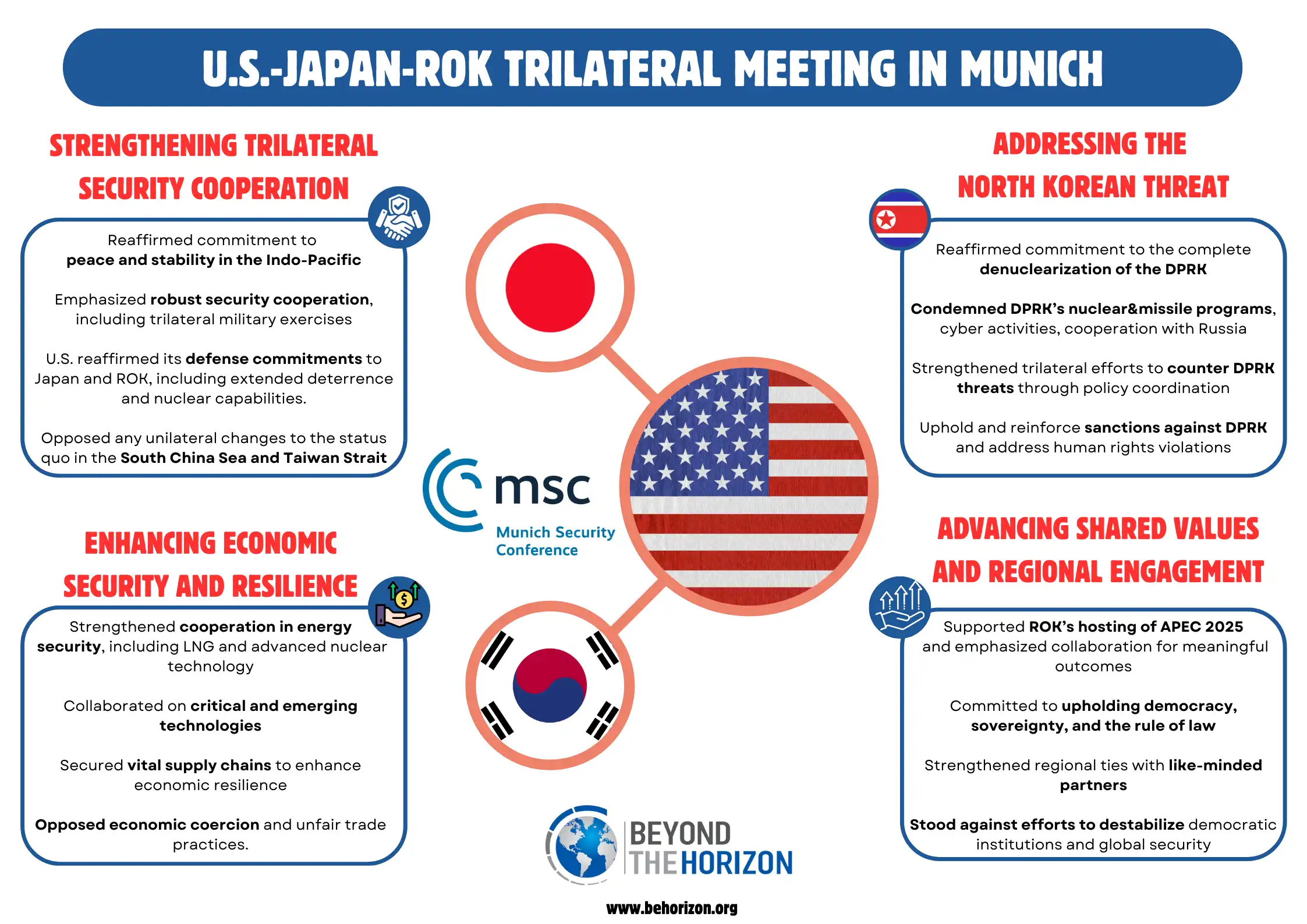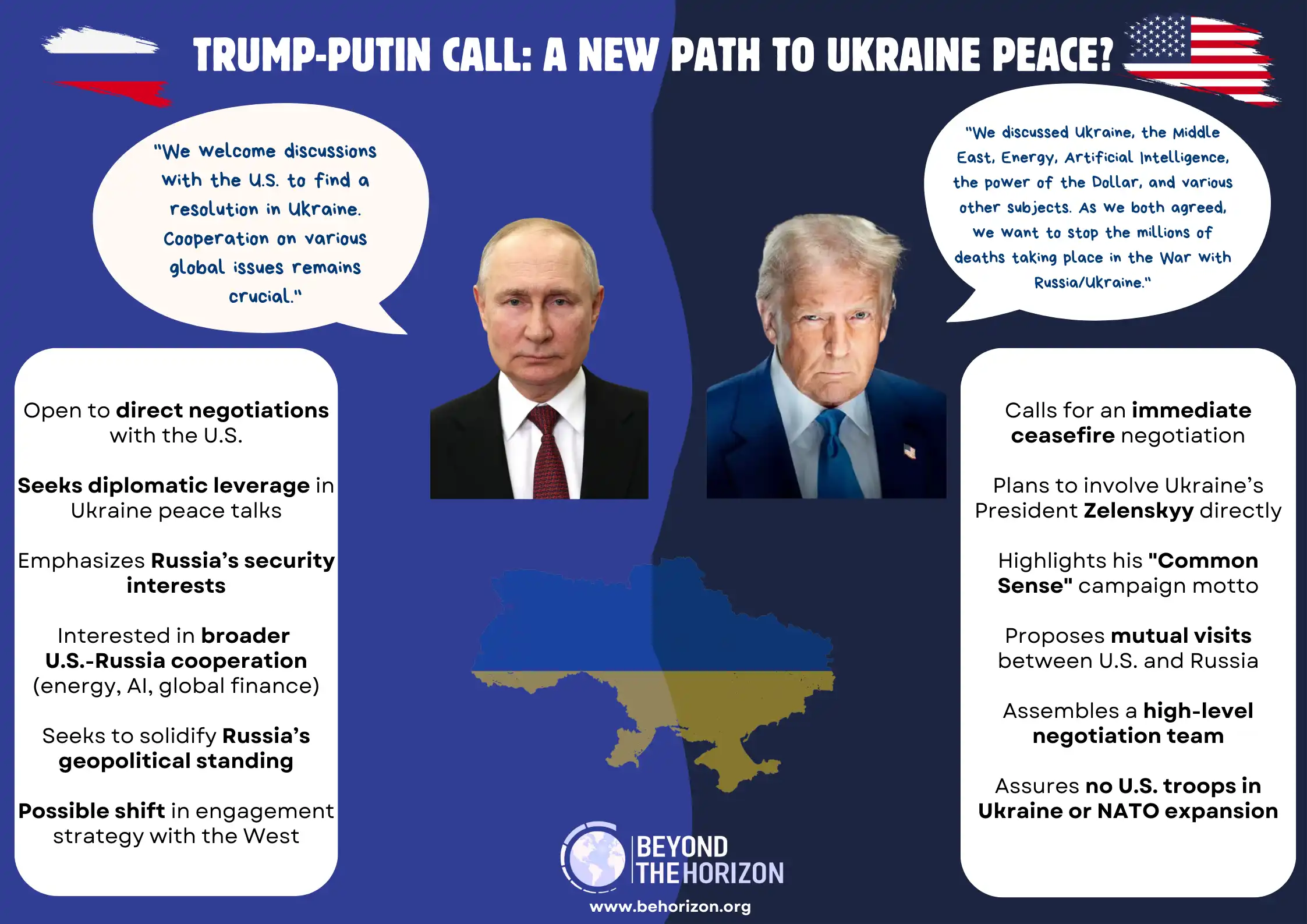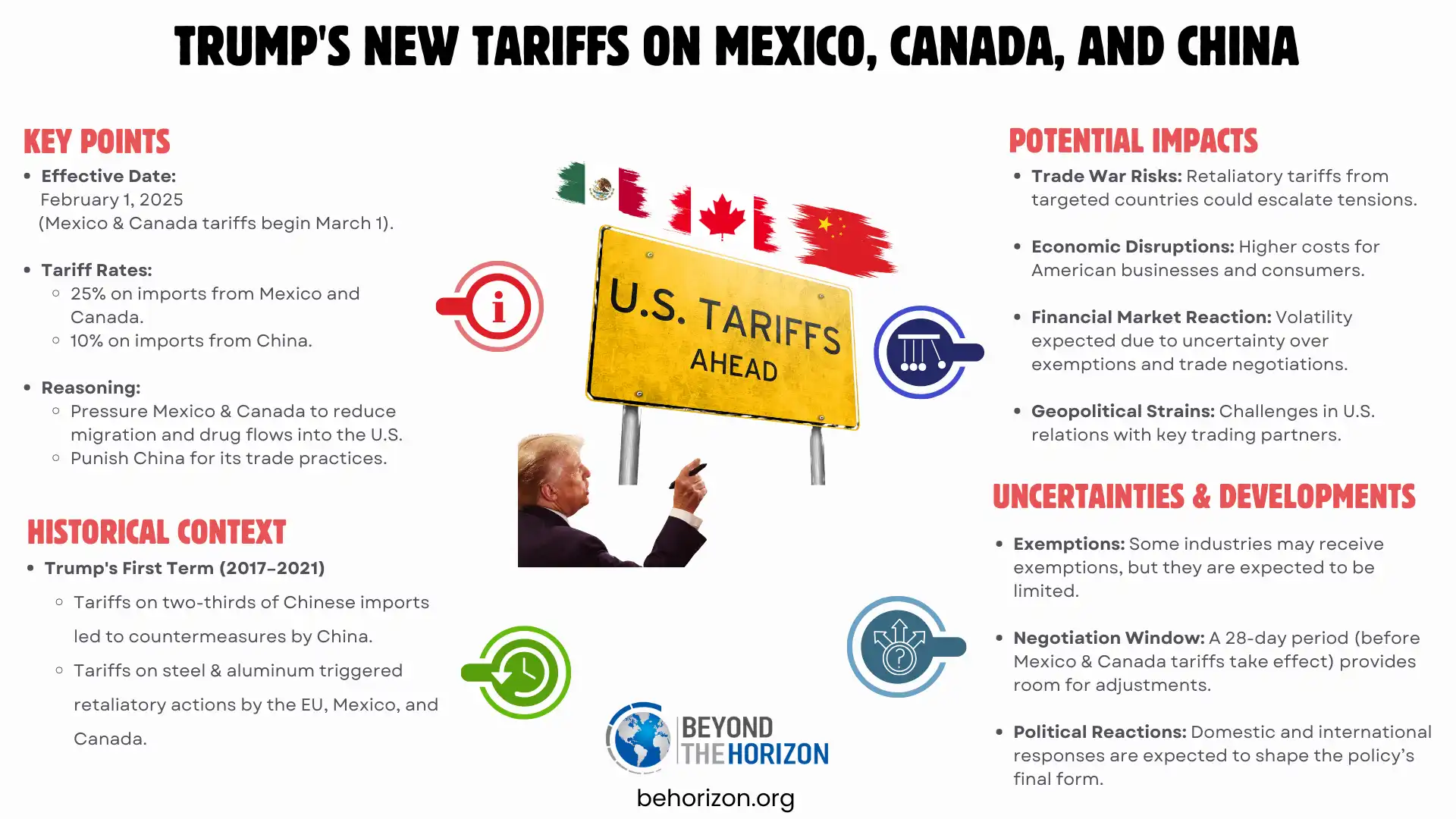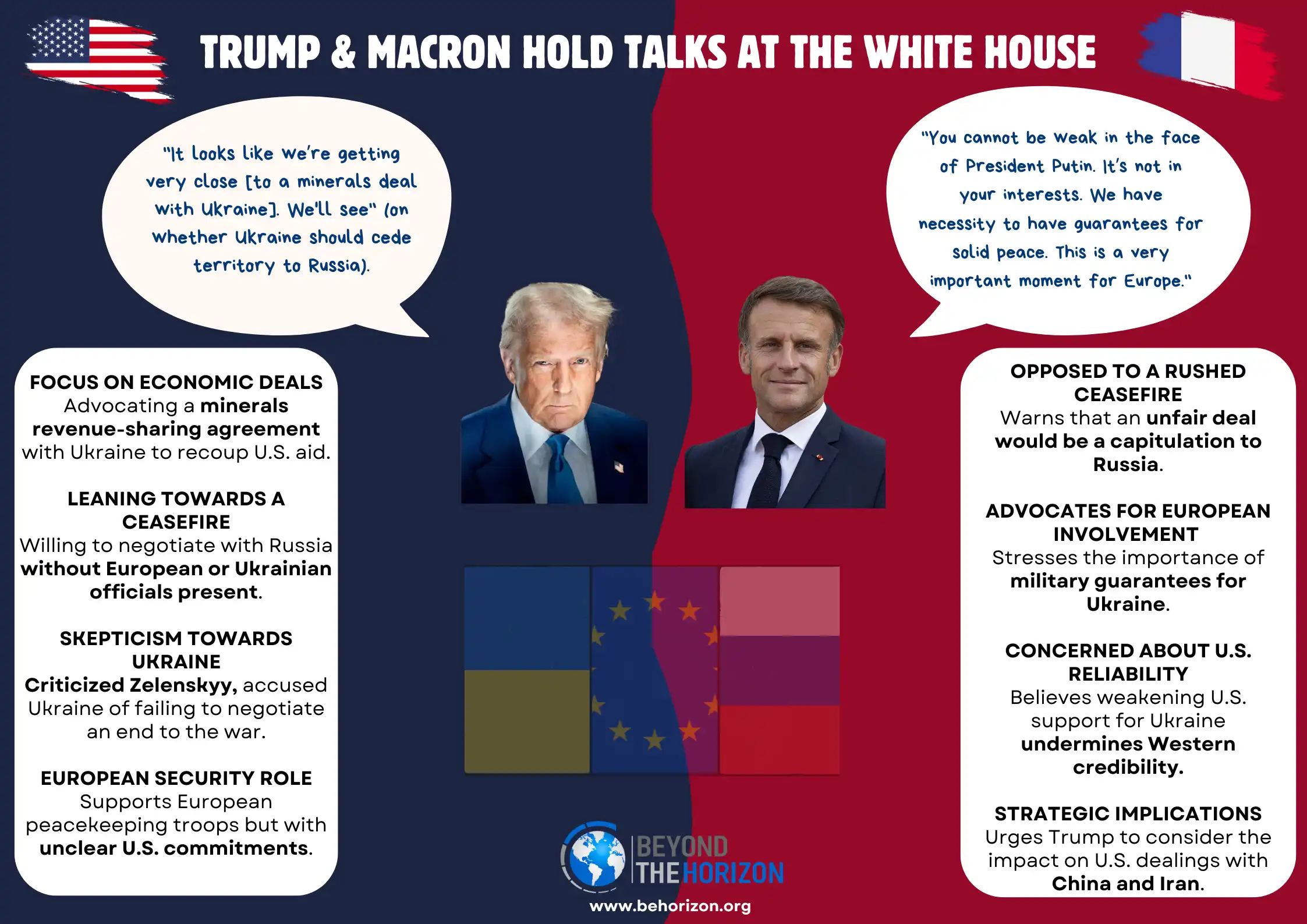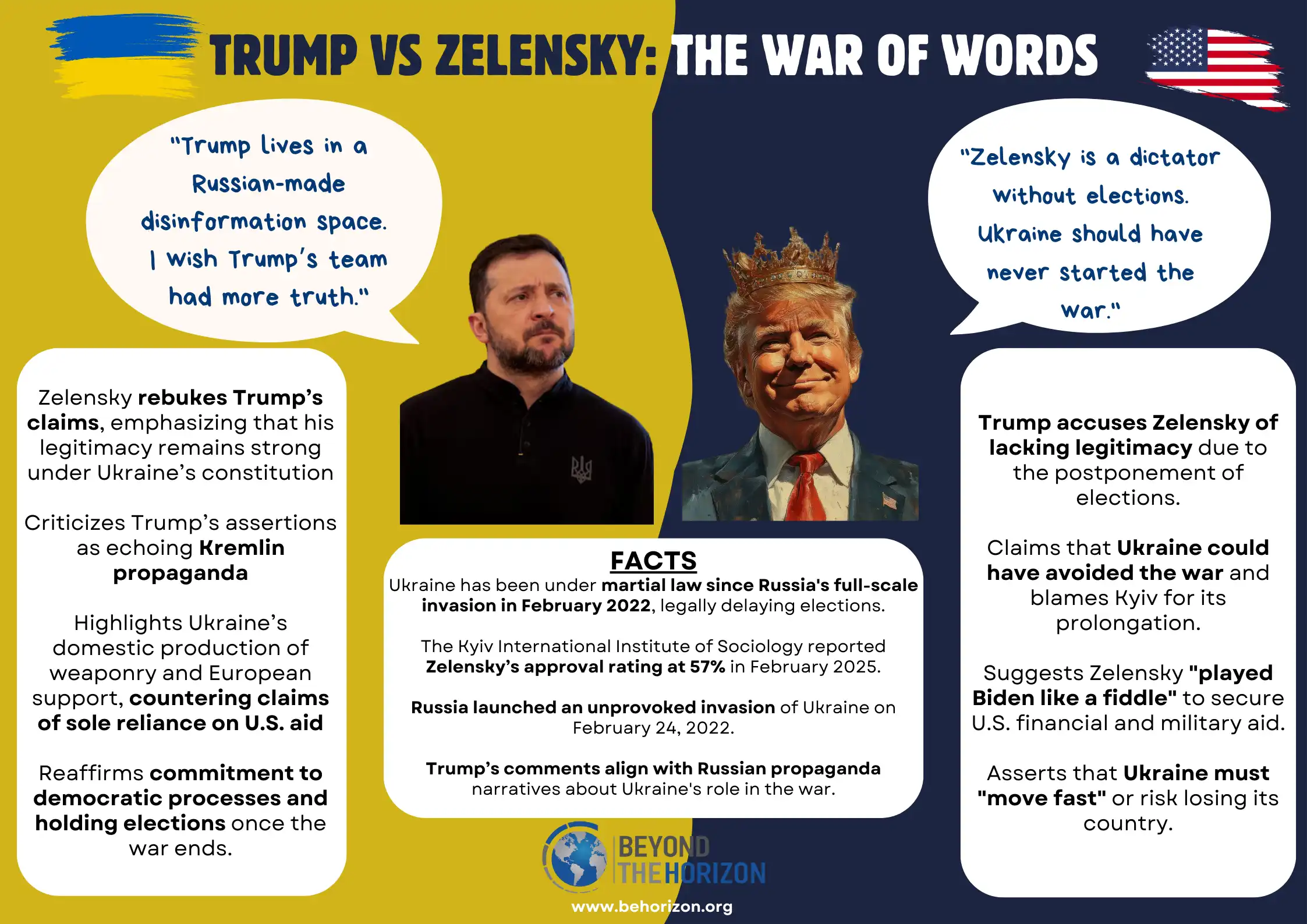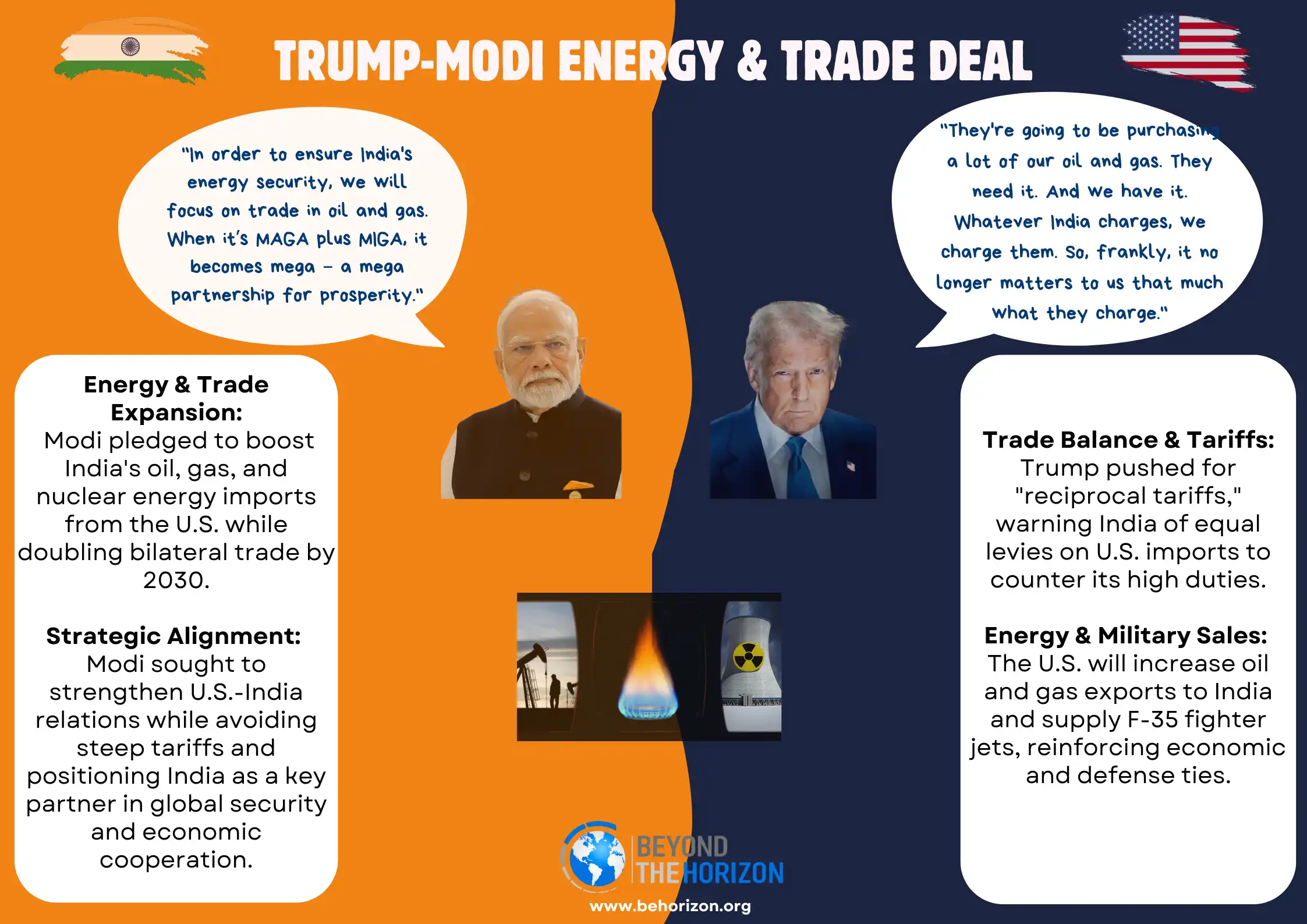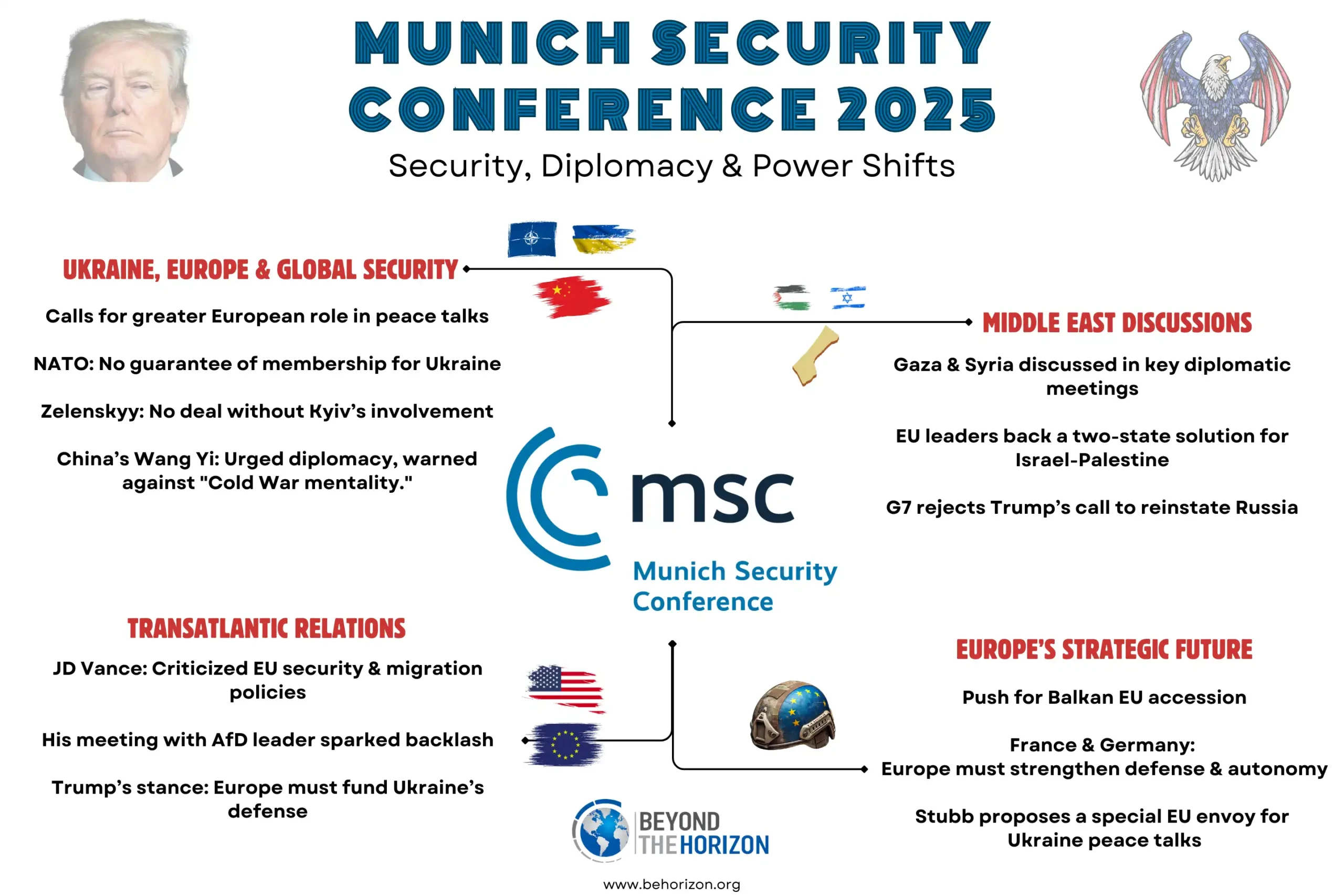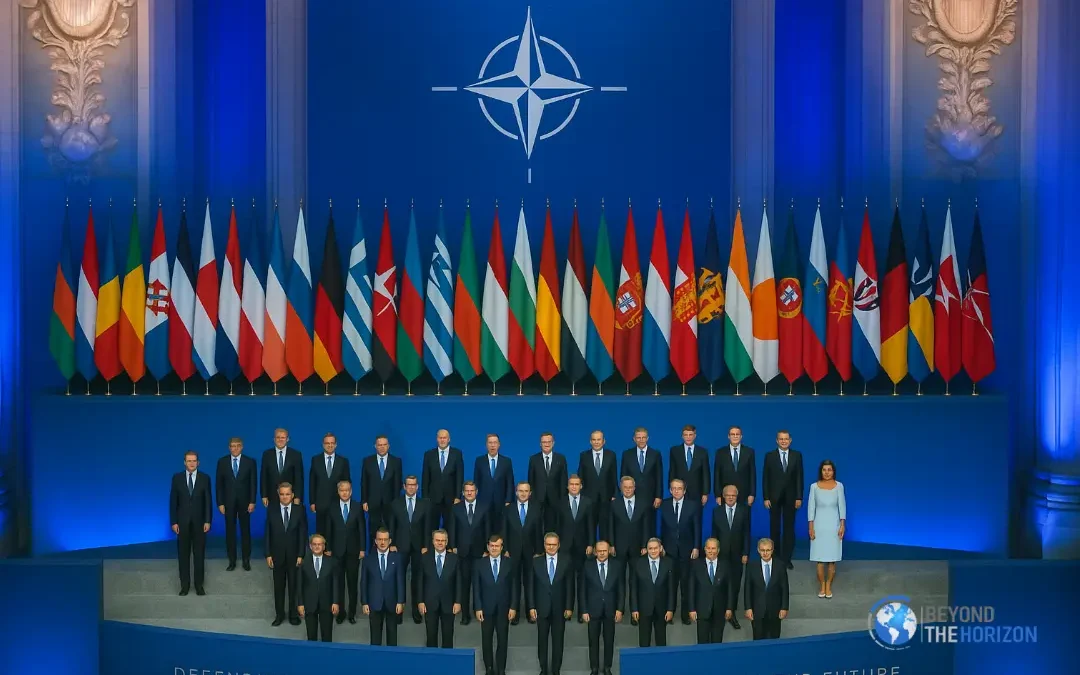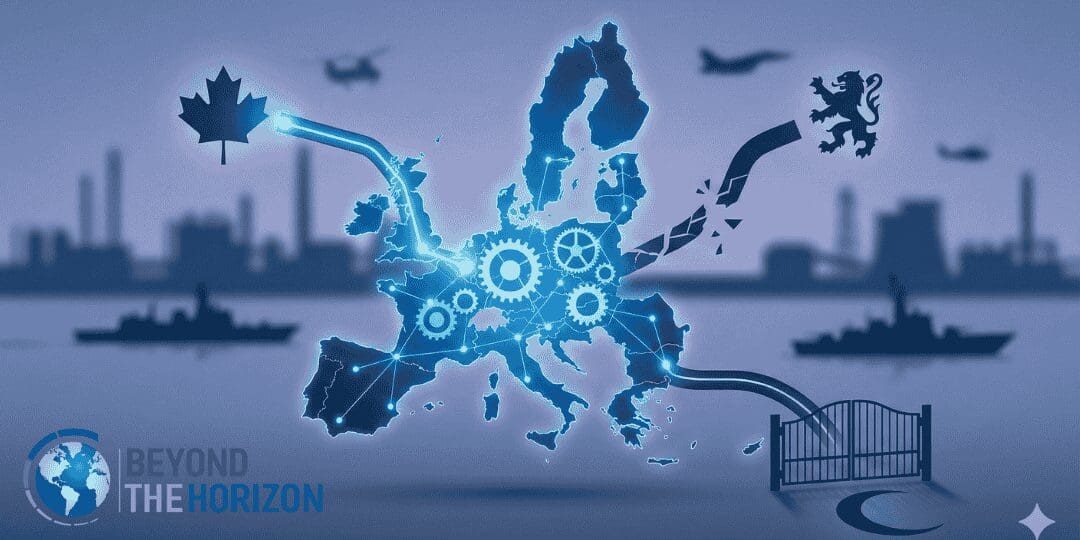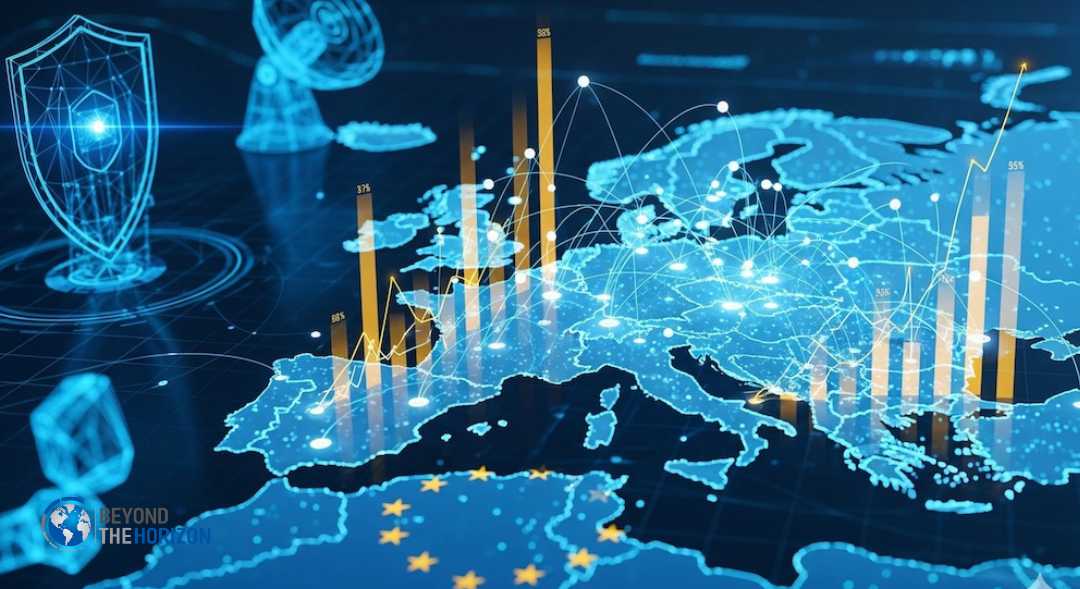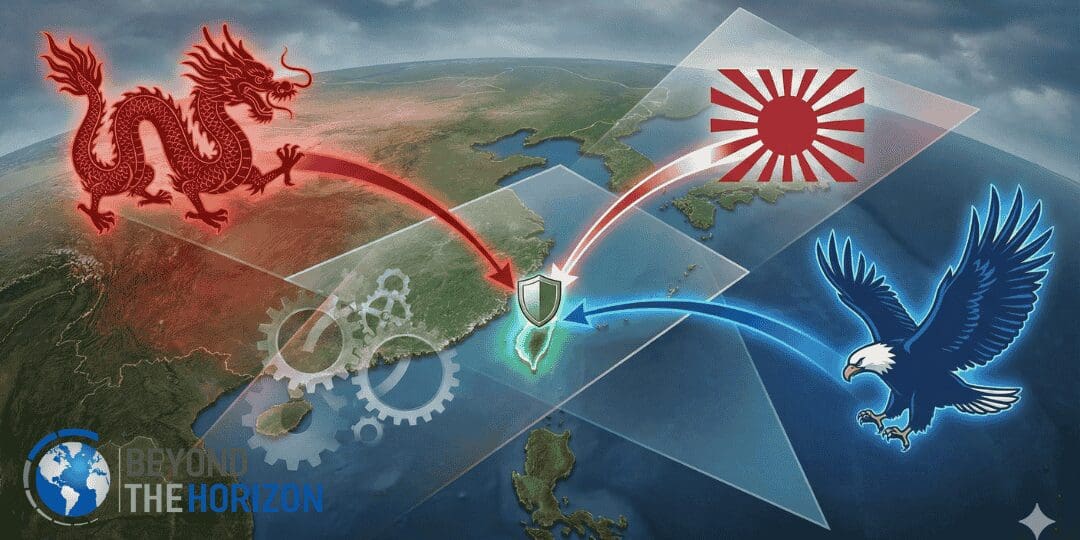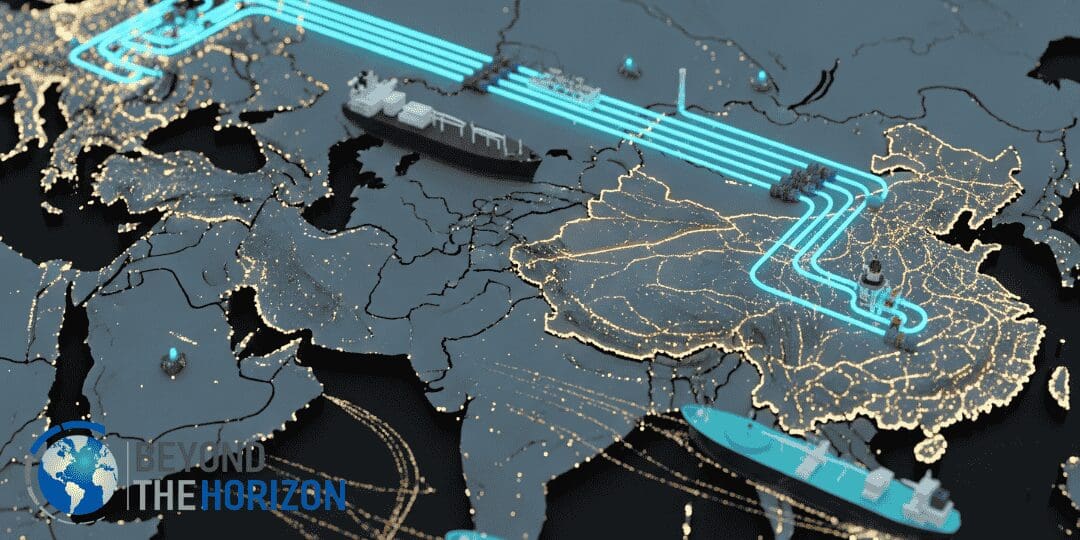Key Takeaways
- Defense Spending Surge: NATO leaders agreed on a historic increase in defense spending, pledging to reach a combined 5% of GDP by 2035, reflecting heightened threats, particularly from Russia, and U.S. pressure for equitable burden-sharing.
- Reaffirmation of Collective Defense: Explicit recommitment to NATO’s Article 5 underscored the Alliance’s resolve, dispelling doubts about U.S. commitment and reinforcing credibility amidst geopolitical tensions.
- Strategic Focus on Industrial Cooperation: Commitments to boost transatlantic defense-industrial cooperation, reduce barriers to defense trade, and prioritize innovation signal NATO’s intention to convert higher spending into tangible military capabilities.
- Ukraine Membership Deferred, Support Maintained: While reaffirming support for Ukraine against Russian aggression, NATO deferred concrete membership steps to avoid internal divisions, balancing immediate solidarity with strategic caution.
- Identification of Russia as a Persistent Threat: NATO explicitly labeled Russia a long-term threat, maintaining measured language to keep diplomatic channels open while enhancing deterrence along NATO’s eastern flank.
- Cybersecurity and Hybrid Threats: Increasing investment in cybersecurity and resilience, NATO emphasized a coordinated response to escalating hybrid threats, recognizing these as critical vulnerabilities potentially triggering collective defense measures.
- Limited but Continued Climate Security Engagement: Climate change, though secondary at this summit, remained an underlying strategic concern, with NATO reaffirming commitments to address climate-related security risks, especially in the Arctic region.
- Innovation and Emerging Technologies: NATO prioritized defense innovation, including artificial intelligence, quantum computing, and autonomous systems, as critical to maintaining strategic and technological superiority.
- Cautious Indo-Pacific Engagement: Despite lower representation from Indo-Pacific partners at this summit, NATO maintained strategic outreach to address shared concerns about China, underlining the Alliance’s intent to sustain global partnerships beyond traditional regions.
Introduction
The North Atlantic Treaty Organization (NATO) convened its heads of state and government in The Hague, Netherlands, on 24–25 June 2025. This high-profile summit – the first ever hosted by the Netherlands – took place amid an evolving security landscape marked by Russia’s ongoing war in Ukraine and questions about U.S. commitment to the Alliance. The summit’s agenda was deliberately streamlined to avoid discord, focusing heavily on defense investment targets and Alliance unity. Despite its brevity, the meeting produced notable outcomes on defense priorities, reinforced NATO’s stance on the war in Ukraine, addressed Alliance enlargement, and touched on emerging challenges from cyberspace to climate security. This policy paper analyzes the major aspects of the June 2025 NATO Summit in The Hague, assessing its strategic decisions and their implications across a range of key issues. It aims to provide an unbiased, comprehensive overview accessible to both academic observers and the general public.
Strategic Outcomes and Defense Priorities
Pledge to Increase Defense Spending: The most headline-grabbing result of the summit was NATO’s new defense spending target. All 32 Allied leaders agreed to significantly boost their military expenditures to a combined goal of 5% of GDP by 2035, in line with U.S. pressure for greater burden sharing. This represents a dramatic increase from the longstanding 2% benchmark and is intended to ensure NATO can meet current and future threats. According to the official Hague Summit Declaration, Allies committed to invest “5% of GDP annually on core defense requirements as well as defense- and security-related spending” by 2035. The 5% goal is divided into two tiers: at least 3.5% of GDP for core military capabilities (troops, weapons, and other combat power) and up to 1.5% for broader security needs like critical infrastructure protection, cyber defense, civil resilience, and defense-industrial investment. This broadened definition of security spending will count efforts such as cybersecurity, strengthening pipelines and transport networks for military mobility, and innovation in defense technology toward the target.
Rationale – Russia and Alliance Credibility: NATO framed this spending surge as a response to an increasingly dangerous world and specifically the “long-term threat posed by Russia to Euro-Atlantic security”, as well as other enduring challenges like terrorism. The summit declaration stated Allies stand “united in the face of profound security threats and challenges” and argued that higher investment is needed for credible deterrence. Russia’s ongoing aggression in Ukraine underscored the urgency to bolster NATO’s collective defense posture. Equally, the spending hike was a political imperative to maintain U.S. engagement in Europe. U.S. President Donald Trump – attending his first NATO summit of his new term – had long criticized NATO’s European members for under-spending, at times questioning America’s defense commitment. In The Hague, Allied leaders effectively “bent the knee” to U.S. demands by adopting the 5% goal, a move designed to placate Washington and affirm that Europe is serious about its defense. NATO Secretary General Mark Rutte, who hosted the summit in his hometown, praised Trump’s role in forging consensus and declared the Alliance would emerge “stronger, fairer and more lethal” as a result. Indeed, Mr. Trump hailed a “great victory” at the summit, emphasizing he got what he wanted on spending.
Collective Defense Reaffirmed: Importantly, NATO’s core Article 5 commitment – that an attack on one ally is an attack on all – was explicitly reaffirmed in the final communiqué. The 32 allies stated their “ironclad commitment to collective defence as enshrined in Article 5”, a point made to dispel any doubts after months of ambiguous U.S. rhetoric. In fact, ensuring a clear recommitment to Article 5 became a litmus test of unity. Early in the summit, President Trump had raised eyebrows by suggesting his support for Article 5 “depends on your definition” of it, but by the end he publicly confirmed “I stand with it… If I didn’t, I wouldn’t be here”. The declaration’s language put to rest speculation about U.S. ambivalence, declaring NATO’s mutual defense pledge “totally committed”. This was a strategic outcome in itself: signaling to any adversary (and to anxious member states) that NATO’s deterrence remains credible despite political turmoil. To bolster deterrence further, leaders agreed that the new investments will provide the forces, capabilities, readiness and resilience required to defend NATO territory and fulfill the alliance’s new regional defense plans approved in 2023. In short, The Hague summit’s primary outcome was a financial and political recommitment to strengthening NATO’s hard power. While largely symbolic and aspirational, the 5% pledge and Article 5 declaration were meant to project unity and resolve in the face of external threats.
Defense Industrial Cooperation and Readiness: Alongside spending promises, NATO emphasized improving how that money is spent. The allies vowed to “rapidly expand transatlantic defence industrial cooperation and to harness emerging technology and the spirit of innovation to advance our collective security”, according to the official declaration. This entails reducing intra-alliance barriers to defense trade and investment, standardizing equipment, and jointly developing advanced technologies. At the summit, NATO unveiled an updated Defence Production Action Plan – a program to boost the alliance’s defense-industrial base and munition production capacity, learning from the munitions shortfalls exposed by the Ukraine war. Leaders agreed to “eliminate defence trade barriers among Allies” and leverage partnerships (with the EU, and even Ukraine and Indo-Pacific partners) to strengthen supply chains and arms production. These steps reflect NATO’s priority on readiness and sustainability: ensuring that higher budgets translate into real military capability. As one analysis noted, it is vital for Europe not just to spend more, but to spend smarter through collaborative procurement and innovation, otherwise money is wasted on fragmented national industries. The Hague Summit at least acknowledged this by linking the spending pledge to industrial reform and innovation initiatives. Overall, NATO’s strategic priority coming out of the summit is to future-proof its collective defense – financially, industrially, and technologically – against the backdrop of Russian aggression and global instability.
NATO’s Position on Ukraine and Relations with Russia
Unwavering Support to Ukraine, Membership Deferred: The NATO Summit reaffirmed strong political and military support for Ukraine against Russia’s invasion but avoided concrete steps toward Ukrainian membership. Leaders stated their ongoing commitment, viewing Ukraine’s security as essential to NATO’s own. However, unlike 2024, membership discussions were sidelined to prevent internal division, frustrating President Zelenskyy. Secretary General Mark Rutte reiterated Ukraine’s “irreversible” path to membership in principle, though practical steps remain paused during wartime. Engagement continues via NATO–Ukraine Council and external aid, highlighted by Trump’s indication of possible Patriot system sales to Ukraine.
Russia Identified as Long-Term Threat: NATO officially labeled Russia a persistent threat due to its aggressive policies. While increasing defense spending to deter Moscow, NATO’s language remained measured to keep diplomatic options open, avoiding explicit blame for the full-scale invasion. The strategic review on Russia was deferred, reflecting U.S. caution ahead of potential negotiations. NATO seeks defense buildup balanced with limited diplomatic outreach, including potential arms control talks.
Excluding Russia, Bolstering Deterrence: Russia–NATO relations stayed frozen, with the alliance enhancing deterrence on its eastern flank and improving readiness. Allies warned of possible direct confrontation by decade-end if Russian aggression persists. NATO’s unity at the summit signaled cohesion against Russian attempts at exploiting divisions. The summit affirmed NATO’s immediate strategy: support Ukraine, deter Russia, and manage internal unity effectively.
Cybersecurity and Hybrid Threats:
Escalating Hybrid Threats: The Hague Summit highlighted growing concerns over intensified cyber and hybrid threats, notably from Russia. Leaders condemned covert operations, cyberattacks, and sabotage attempts aimed at destabilizing NATO nations. Recognizing these threats could potentially trigger collective defense responses, NATO stressed enhanced preparedness and resilience as core priorities.
Investment in Cyber Defense: NATO committed part of its increased defense spending (1.5% of GDP) explicitly toward cybersecurity and infrastructure resilience. Efforts include securing critical infrastructure, improving cyber defense, and bolstering civil preparedness. Recent attacks, such as sabotage of the Nord Stream pipeline and cyber incidents in the Baltics, underscored vulnerabilities, prompting intensified information sharing, coordinated cyber responses, and enhanced capability-building across the Alliance.
Coordinated Hybrid Response: The summit emphasized a unified NATO-EU approach to hybrid threats, enhancing civil-military cooperation, emergency planning, and counter-disinformation strategies. Allies confirmed hybrid threats would be addressed decisively, potentially invoking collective defense measures if attacks result in severe consequences, ensuring NATO adapts effectively to contemporary security challenges.
Climate Security and Innovation Initiatives
Climate Security – A Quiet Undercurrent: Climate change received limited attention at The Hague summit due to pressing geopolitical concerns, yet its security implications remained evident. NATO recognizes climate change as a “threat multiplier” influencing global stability—from Arctic geopolitical competition driven by melting ice to extreme weather impacting military readiness. Although new climate initiatives were absent at this summit, NATO reaffirmed earlier commitments, including the Climate Change and Security Action Plan from past summits (2021 Brussels, 2022 Madrid). Arctic stability and climate resilience of military infrastructure were specifically highlighted. The NATO Public Forum concurrently underscored ongoing Alliance attention to climate security and energy transition.
Defense Innovation and Emerging Tech: Technological innovation was a prominent theme, with NATO leaders emphasizing the importance of maintaining technological superiority in areas such as AI, quantum computing, autonomous systems, and space. The summit declaration underscored innovation, complementing ongoing NATO projects like DIANA and the NATO Innovation Fund. Leaders discussed enhancing collaborative R&D and technology sharing among Allies and protecting innovations against espionage. Additionally, NATO clarified that defense-related investments in emerging tech count towards spending benchmarks, incentivizing innovation.
Energy and Sustainability Initiatives: Energy sustainability, linked to innovation and climate security, remains a secondary yet integral focus. NATO’s initiatives include researching advanced energy storage solutions and testing hybrid-electric military vehicles to enhance energy efficiency and reduce carbon footprints. Hague summit’s Dutch hosts even symbolically showcased sustainable tech by incorporating electric vehicles and highlighting the summit logo featuring wind turbine blades (a nod to clean energy).
Overall, while climate and innovation were secondary themes at The Hague summit, NATO continues to prioritize adapting to climate impacts and harnessing technological advancements to strengthen future security.
Relations with Indo-Pacific Partners
Outreach to the Indo-Pacific “Asia-Pacific Four” (AP4): In recent years, NATO has developed closer ties with key Indo-Pacific democracies – namely Japan, South Korea, Australia, and New Zealand – recognizing the interconnected nature of Euro-Atlantic and Indo-Pacific security. Leaders of these four nations were invited to NATO summits in 2022, 2023, and 2024 as special participants. The 2025 summit continued this trend in principle, but attendance was mixed. Notably, three of the four Indo-Pacific heads of government opted to skip The Hague meeting (likely due in part to the brevity of the summit and pressing issues elsewhere). Only New Zealand’s Prime Minister attended in person, and Japan sent a senior delegation, whereas Australia and South Korea were represented at lower levels or not at all. This resulted in a lower profile for Indo-Pacific issues during the summit. Some observers perceived this as a cooling of enthusiasm – a sign that the AP4-NATO partnership might be losing momentum. However, alliance officials downplayed it, reaffirming that NATO remains committed to engaging with these like-minded nations.
Shared Concerns – China and Global Stability: When Indo-Pacific partners were discussed, the focus was on shared strategic challenges, especially the rise of China. In prior communiqués (e.g., 2021 and 2024), NATO for the first time addressed China’s influence, calling it a “challenge” to allied interests and noting concerns about China’s deepening ties with Russia. The expectation before The Hague was that NATO would continue strengthening ties with the AP4 as part of addressing the China challenge. In reality, the summit’s short declaration did not explicitly mention China at all – a stark contrast to 2024’s NATO statement that labelled China a “decisive enabler” of Russia’s war. This omission was likely due to the narrow scope of the communique (focusing on unity and spending) and perhaps to avoid internal disagreements on how hard to criticize Beijing. Nonetheless, on the sidelines and in NATO’s strategic thinking, China’s military rise and assertiveness in areas like the South China Sea and emerging technologies remain a pressing concern. NATO’s outreach to the Indo-Pacific partners is fundamentally about consulting on such issues and ensuring these regions support the international rules-based order. NATO and AP4 countries share an interest in protecting global commons (like sea lanes and cyber domain) and preventing coercion by authoritarian powers.
Areas for Deeper Cooperation: Moving forward from the summit, experts argue NATO and its Indo-Pacific partners should pursue practical cooperation in specific domains. One priority is maritime domain awareness and undersea security – as both NATO states and Pacific partners face threats to undersea cables and naval vessels from Russia and China. Joint monitoring of critical undersea infrastructure and sharing of maritime surveillance data could benefit both sides. Another area is cyber defense collaboration, since cyber threats from hostile states are truly global. Additionally, exchanges on military technology (for example, Japan and South Korea’s advanced tech industries can contribute to NATO’s innovation efforts) are on the table. Even though The Hague summit did not showcase new initiatives with the AP4, it underscored an ongoing approach: NATO is reaching beyond the North Atlantic to form a network of democracies that can reinforce each other. NATO Secretary General Rutte held brief talks with the Japanese delegation and New Zealand PM on the sidelines, discussing regional security in East Asia and the war in Ukraine’s global implications. The mere invitation of Indo-Pacific leaders to NATO summits signals that NATO does not see security as confined to Europe and North America. One risk noted was that the partial no-show in 2025 might embolden those who argue NATO should stick to its region. However, alliance officials and analysts maintain that “much closer engagement and cooperation is needed” with the Indo-Pacific partners in light of systemic challenges posed by China. In summary, The Hague summit kept the door open to the Indo-Pacific, even if this year’s format limited substantive outcomes. The concept of a “global NATO” is still nascent, but NATO’s partnership with Asia-Pacific nations is set to deepen through joint dialogues, exercises, and coordinated positions on international security issues.
Conclusion
The 2025 NATO Summit in The Hague will be remembered as a summit of both resolve and restraint. On one hand, it delivered a strong message of allied unity: a new 5% defense investment pledge, a clear recommitment to collective defense, and continued solidarity with Ukraine against Russian aggression. These outcomes underscore NATO’s determination to strengthen deterrence and adapt to a deteriorating security environment. The alliance also signaled resolve in tackling emerging challenges, from bolstering cyber defenses and infrastructure resilience to embracing innovation in technology and addressing long-term issues like climate security in its strategic calculus. On the other hand, the summit laid bare the underlying stresses within NATO. It was short and “unambitious” by design, aimed primarily at preserving internal harmony in the face of U.S. skepticism. Critical topics – Ukraine’s membership hopes, a strategy on Russia, China’s challenge – were downplayed or deferred to avoid splits. The ambitious defense spending target, while symbolically powerful, immediately exposed divisions in burden sharing that NATO will have to manage carefully to prevent recriminations down the road.
In sum, the The Hague summit achieved its immediate mission of showing a united front and buying time for the Alliance. NATO emerged without the crisis many feared, reinforcing its value at a time of war in Europe. But it also pushed tougher decisions to the future. The alliance must now turn pledges into capabilities, keep supporting Ukraine amid uncertain U.S. politics, and address strategic questions about dealing with Russia and engaging the Indo-Pacific. As this policy analysis has detailed, NATO finds itself in a balancing act – rearming and reforming for external threats while continually tending to internal cohesion. The coming years will test whether the 2025 summit’s outcomes were a foundation for renewed strength or a temporary patch over deeper cracks. For NATO to remain, in its own words, the “strongest alliance in history,” it will need sustained political will, resources, and unity of purpose beyond what was cautiously marshaled in The Hague. The summit was a step forward, but the real work – implementing decisions and preparing the Alliance for an uncertain future – begins now, under the shadow of both an emboldened Russia and an unpredictable transatlantic environment. NATO’s ability to weather those challenges will determine if the spirit of The Hague 2025 is remembered as a turning point toward greater solidarity or a fleeting truce before storms to come.
Related Infographics

